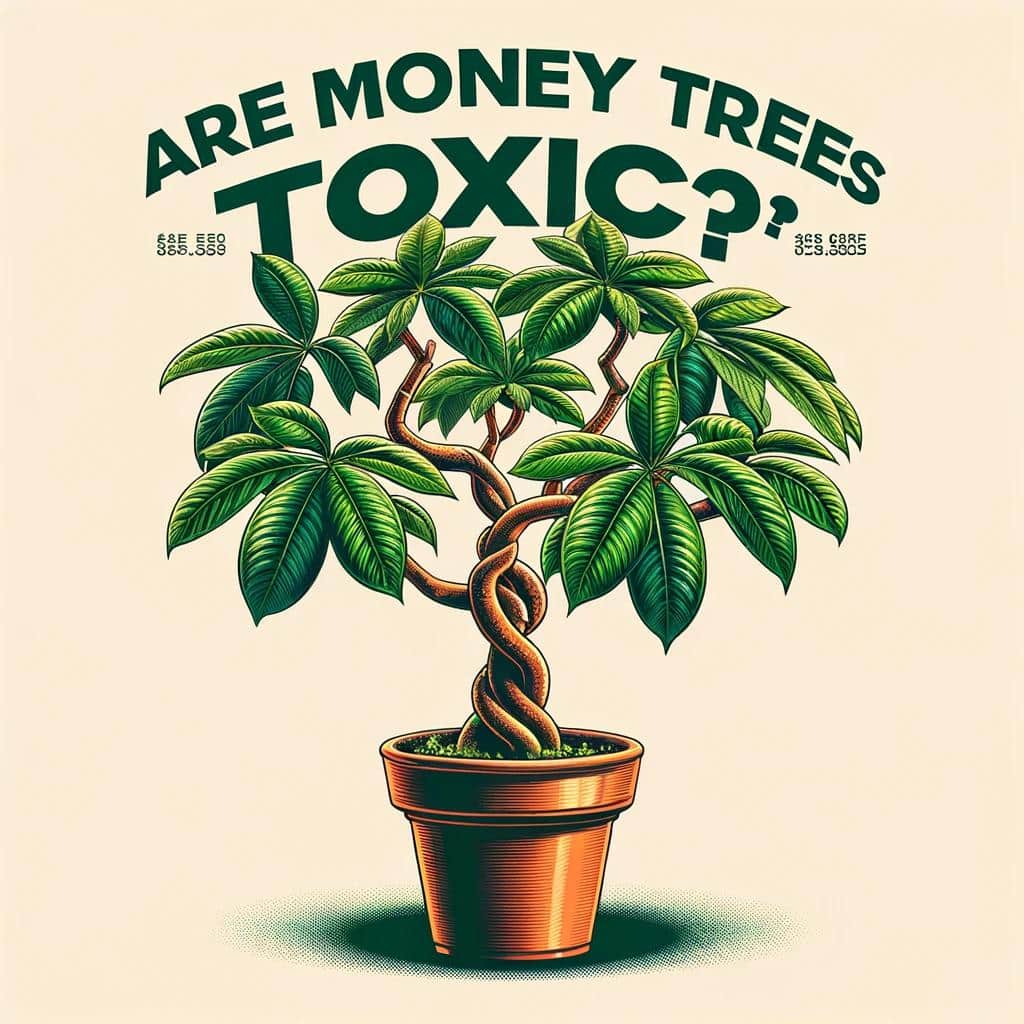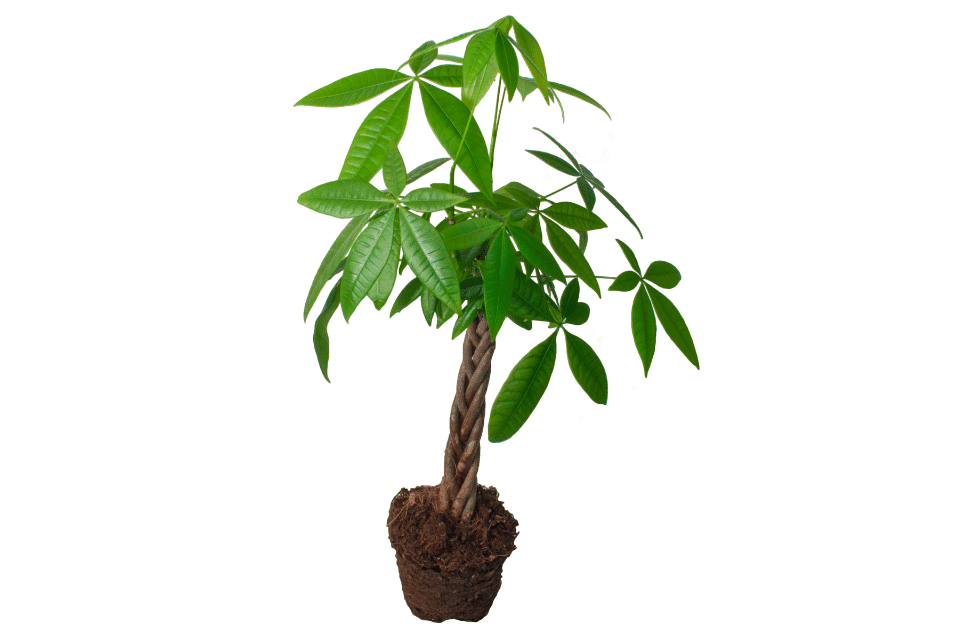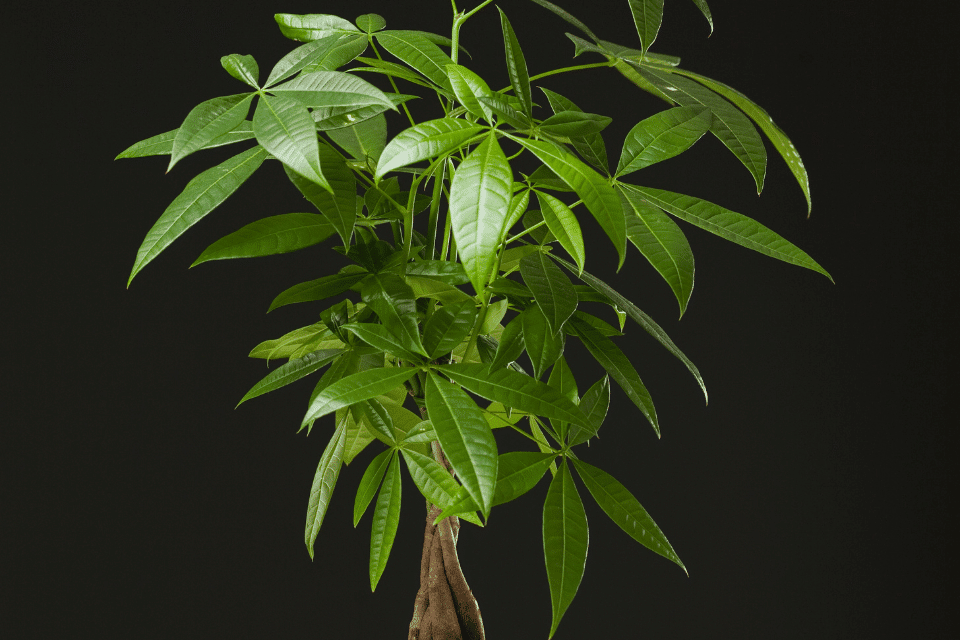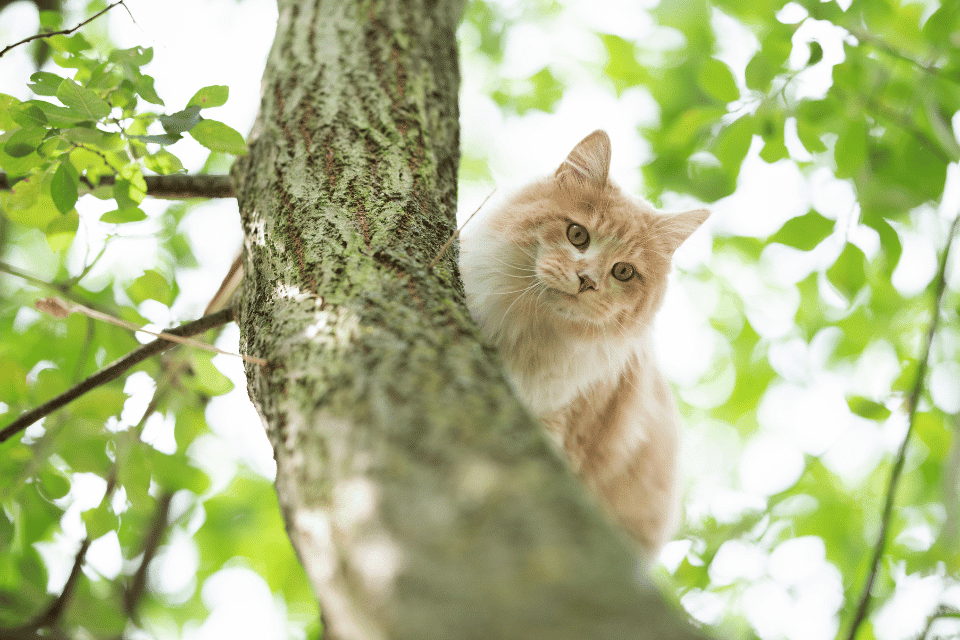
Greetings, fellow Earth lovers and cat enthusiasts! If you’ve found yourself here, you’re likely facing a common conundrum: how to create a harmonious coexistence between your beloved feline companions and your cherished indoor greenery. Specifically, you’re probably pondering the crucial question—Are money trees safe for cats? Allow us to delve into the world of plant care and feline well-being to provide you with a comprehensive answer.

The Truth About Money Trees and Their Impact on Cats
Before you hastily relocate your Pachira Aquatica to the garage or even consider parting ways with it, let’s dispel the myths and unveil the facts. Money trees, scientifically classified under the Family Malvaceae, aren’t the sinister foes in the narrative of your cat’s life. However, it’s essential to exercise caution. Whilenot inherently toxic, the leaves of these money trees can cause mild gastrointestinal issues in cats, such as vomiting and diarrhea.
A Non-Toxic Yet Cautious Approach
While it’s reassuring that money trees aren’t toxic, it’s vital to acknowledge that their leaves can potentially irritate your cat’s stomach. So, while it may not lead to a catastrophe, you may find yourself dealing with an uncomfortable feline companion. It’s worth noting that the same applies to dogs—money plants are generally safe for them but can also trigger similar irritations.
Decoding the Enigma of Money Trees
Money trees go by various monikers, including Malabar Chestnut, French Peanut, and Guiana Chestnut. Originating from the humid, swampy regions of Central and South America, they have successfully transitioned to become one of the most popular houseplants. But what’s the story behind the intriguing name, “Money Tree”?
The Lore of the Money Tree
According to Chinese feng shui principles, these plants are believed to bring good fortune and prosperity, hence their name. With their braided trunks and distinctive five-lobed leaves representing thefive elements in feng shui—wood, water, earth, fire, and metal—the symbolism is intriguing. However, it’s essential to remember that not all cats share the same enthusiasm for your financial well-being and might be tempted to take a curious nibble.

Expert Insights: What Research Indicates
Let’s turn to the experts for a more in-depth understanding. According to the American Society for the Prevention of Cruelty to Animals (ASPCA), ingesting money tree leaves can lead to mild gastrointestinal disturbances in cats, ranging from vomiting to diarrhea. Dogs may also experience similar issues, although they tend to be less severe. Thus, while money trees may not pose the same toxic threat as some other plants, they are not entirely without risks.
Managing Your Cat’s Appetite for Money Trees
So, what should you do if your cat seems to view your money tree as an all-you-can-eat salad bar? Rest assured, there are steps you can take to address this issue:
1. Elevate the Plant
Move the money tree to a high shelf or location where your kitty cannot access it. This simple adjustment can prevent unwanted munching.
2. Use Natural Repellents
Consider spritzing the leaves with diluted lemon juice or natural oils that cats find unappealing. This can serve as a deterrent to discourage your cat from nibbling on the leaves.
3. Distract and Redirect
Provide your cat with interactive toys or introduce cat grass or catnip to divert their attention away from the money tree. Cats are intelligent creatures and can be trained to focus their curiosity elsewhere.
Are Money Trees Truly Safe for Cats and Dogs?
In summary, money trees are generally considered non-toxic to both cats and dogs. However, they may not be the best choice if your cat has a penchant for plant nibbling. While the gastrointestinal issues resulting from ingestion are not life-threatening, they can certainly cause discomfort to your beloved pets. Therefore, it’s crucial to maintain a vigilant watch over your furry friends after introducing a money tree into your home. If you observe any symptoms such as vomiting or diarrhea, do not hesitate to seek advice from your veterinarian for expert guidance.
Considerations for Kittens
While money trees are also non-toxic to kittens, it’s important tonote that kittens, with their immature digestive systems and natural curiosity, are more susceptible to gastrointestinal upset. They are more likely to explore and chew on various objects, including plants. Thus, extra vigilance is required when you have kittens in the house.
Exploring Plant Alternatives and Further Recommendations
If you remain concerned about potential conflicts between your feline companions and plants, there are alternative plant options that are 100% safe for cats:
- Areca Palms: These are lush and completely non-toxic, making them an excellent choice.
- Boston Ferns: Not only are they safe, but they also purify the air, enhancing your indoor environment.
- Orchids: For those who appreciate flowering plants, orchids are a safe and elegant choice.
Additional Recommendations
Before introducing any new plant into your home, it’s wise to consult your veterinarian, especially if your pet has a history of health issues. Familiarize yourself with various plants and their properties. The ASPCA offers a comprehensive list of plants that are toxic and non-toxic to cats, providing valuable guidance for pet owners.

The Science Behind Toxicology
Interestingly, the Family Malvaceae, to which Pachira Aquatica belongs, has been subject to toxicological studies involving both humans and animals. A study published in the Journal of Environmental Science and Health sheds light on the need to understand the chemical composition of plants within this family and their effects when ingested. While the study doesn’t specifically reference money trees, it underscores the variability in toxicity within the Malvaceae family.
Insights from International Cat Care
International Cat Care, a renowned feline welfare charity, places a strong emphasis on educating cat owners about potential plant-related risks. They offer a comprehensive guide detailing plants that are toxic and non-toxic to cats, including money trees, which are classified as non-toxic but potentially irritating. Such third-party validations should provide reassurance to concerned cat parents.
The Roots of the Money Tree
The money tree, known by exotic aliases like Guiana Chestnut, Monguba, and Saba Nut, traces its origins to the wetlands of Central and South America. A study published in the Journal of Ethnopharmacology highlights the traditional use of many plants native to these regions for medicinal purposes. While we do not advocate using your money tree as a feline remedy, understanding its origins can offer insights into its overall impact on pets.

The Power of Plants for Emotional Wellness
Believe it or not, a study featured in the Journal of Physiological Anthropology reveals that interacting with indoor plants can reduce psychological and physiological stress in humans. Although not directly related to cats, this finding offers a unique perspective on why individuals, like yourself, are drawn to incorporating plants such as the money tree into their living spaces.
Conclusion: Creating a Feline-Friendly Green Space
In conclusion, money trees are generally safe for cats, but they should be handled with care to avoid any undesirable veterinary visits. Beyond the potential for gastrointestinal issues, it’s about cultivating an environment that is both safe and enriching for every inhabitant of your home. Stay informed, seek expert advice when needed, and you’ll succeed in creating a space that’s not only green but also feline-friendly.
Bibliography
- ASPCA. (n.d.). ASPCA’s List of Toxic and Non-Toxic Plants. Retrieved from ASPCA website.
- Burchett, S., Smith, T., & Darko, G. (2018). Toxicological implications of plants in the Malvaceae family: A review. Journal of Environmental Science and Health, 53(7), 556-566.
- International Cat Care. (n.d.). Plant Toxicity in Cats. Retrieved from International Cat Care Website.
- Pieroni, A., Quave, C., & Giusti, M. (2014). Traditional pharmacopoeias and medicines among Albanians and Italians in southern Italy. Journal of Ethnopharmacology, 155(1), 1418–1433.
- Lee, M. S., Lee, J., Park, B.-J., & Miyazaki, Y. (2015). Interaction with indoor plants may reduce psychological and physiological stress by suppressing autonomic nervous system activity in young adults: a randomized crossover study. Journal of Physiological Anthropology, 34, 21.
Legal Disclaimer This article is intended for informational purposes only and should not be used as a substitute for professional veterinary advice, diagnosis, or treatment. Always consult your veterinarian or another qualified animal health provider with any questions regarding your pet’s health or behavior.





